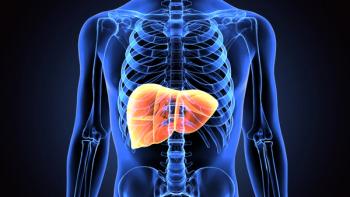
CDC Publishes Hepatitis Reports
The CDC reports that the incidence of hepatitis A and B has declined.
The CDC has published its
In addition, the CDC published its
Here are some key findings from the reports:
Hepatitis A
For the year observed, 2021, the authors explained that the reported rate of hepatitis A declined for a second year in a row. From 2020–2021, CDC said there was a 43% decrease in incidence. There were a total number of 5728 new cases corresponding to 11,500 estimated infections.
“By the end of 2021, 14 of 37 states had declared an end to widespread and prolonged hepatitis A outbreaks associated with person-to-person transmission, primarily occurring among persons who use drugs and those experiencing homelessness,” the authors wrote. “These outbreaks demonstrate the importance of surveillance to identify cases and vaccination to prevent and respond to hepatitis A.”
Hepatitis B
For hepatitis B, new virus infections declined in 2020 and 2021. According to the report, 47 states reported 2045 hepatitis B cases corresponding in an estimated 13,300 infections. The authors report that for years there were stable rates of hepatitis B infection, however, the rate of infections decreased significantly in 2020 and again the rate decreased by 14% in 2021.
The authors noted that although the 2 hepatitis B indicators for new infections met the annual target for 2021, they write, “it is difficult to determine to what degree the lower rates are attributable to true reductions in disease burden versus impact of the COVID-19 pandemic on access to healthcare, hepatitis testing, and health department capacity to perform viral hepatitis case investigations.”
For mortality, the indicators for hepatitis B-related deaths did not meet the annual targets in 2021; however, rates of hepatitis B-related deaths may have been impacted by the increase in overall deaths during the pandemic.
The authors said there is a strong public health need to continue the CDC’s
Hepatitis C
The figures on this form of the virus have continued a disturbing pattern. During 2020-2021, the infection rates increased 14%. This is after hepatitis C rates doubled during 2014-2020.
There were 5023 reported cases of hepatitis C (HCV), with 69,800 estimated infections and 43 states reporting 107,540 newly reported cases.
In addition, some other takeaways for people who contracted HCV, injection drug use was the most commonly reported risk factor at 57%.
“The death rates for hepatitis C among non-Hispanic American Indian (AI / Alaska Native (AN) persons and non-Hispanic Black persons were 3.4 times and 1.7 times, respectively, the death rate among non-Hispanic White persons.”This demonstrates the continued challenges amongst these groups.
The pandemic effect
The pandemic may have affected incidence numbers. “The findings in this report should be interpreted with caution,” the authors wrote. “The number of viral hepatitis cases reported to CDC in 2020 and 2021 may be lower than in years before the COVID-19 pandemic began. The decrease may be related to fewer people seeking healthcare and being tested for viral hepatitis during the COVID-19 pandemic.”
This article was originally published by Contagion.
Newsletter
Get the latest industry news, event updates, and more from Managed healthcare Executive.






















































